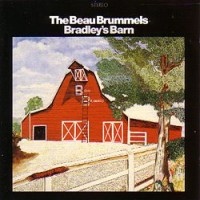
Even though early rock and roll was deeply rooted in country music, the two were ideologically at odds from the start. This rift became more pronounced as the ’50s gave way to the ’60s, and by 1965 Nashville was more provincial than ever, seemingly impervious to the supernovas of musical activity in cities like London and LA. Nevertheless, rumblings of a sea change can be heard during this time period even in the music of Rock’s prime movers, the Beatles’ “Run For Your Life” on Rubber Soul just one example.
In 1966, less than a year after he had almost been booed offstage for playing an electric guitar at the Newport Folk Festival, Bob Dylan would travel to Nashville to cut a little record called Blonde On Blonde. Similarly, even on their early albums the Byrds and Buffalo Springfield wore their country influences on their sleeves, this mark of distinction becoming even more pronounced with each release. Something needed to give, and give it eventually did in the summer of 1968. Embracing traditional country & western (some argue to a fault), the Byrd’s landmark LP Sweetheart of the Rodeo announced the arrival of a new aesthetic. Released the following spring, Bob Dylan’s downhome Nashville Skyline upped the ante even more.
These records confused both the squares and the hippies when they came out, but not as much as when Gram Parsons and Chris Hillman defected from the Byrds to form the Flying Burrito Brothers. Parsons, most largely responsible for the Byrd’s dramatic switch to Country purism on “Sweetheart…”, needed a broader sonic canvas to explore his “Cosmic American Music”, and he would do just that on 1969′s The Gilded Palace of Sin. Its cover, depicting the long-haired Parsons in a marijuana leaf-patterned rhinestone suit, conveyed its mission statement almost as much as the music within. Unlike the Byrds’ and Dylan’s albums, The Gilded Palace of Sin took pieces from country and rock and reassembled them into something truly unique. Of the three releases in this “Country Rock Holy Trinity”, the Burrito’s album sold the most poorly, but its long-term impact exceeded that of its counterparts. Immediately after its release, musicians of all stripes took notice, and decades later the alt. country movement would be born when bands such as Uncle Tupelo and the Jayhawks returned to this well with a similar M.O. But the few years between the late ’60s and early ’70s represent what can only be called Country Rock’s Golden Age. Below are some more highlights:
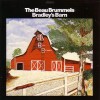 1. Bradley’s Barn Beau Brummels (1968) This release by undervalued San Francisco folk rockers, which arrived in stores just a few short weeks after Sweetheart of the Rodeo, is in some ways more successful than its competition. Much of this can be attributed to Sal Valentino’s gritty vocals and the impeccable picking of some ace Nashville sessioneers.
1. Bradley’s Barn Beau Brummels (1968) This release by undervalued San Francisco folk rockers, which arrived in stores just a few short weeks after Sweetheart of the Rodeo, is in some ways more successful than its competition. Much of this can be attributed to Sal Valentino’s gritty vocals and the impeccable picking of some ace Nashville sessioneers.
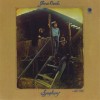 2. Goose Creek Symphony Established 1970 (1970) On their debut album, this Arizona outfit conveys a laid-back and goofy stoner vibe, which somewhat belies its virtuosic musicianship. Its side two opener, “Talk About Goose Creek and Other Important Places”, is one of country rock’s great psychedelic rave-ups.
2. Goose Creek Symphony Established 1970 (1970) On their debut album, this Arizona outfit conveys a laid-back and goofy stoner vibe, which somewhat belies its virtuosic musicianship. Its side two opener, “Talk About Goose Creek and Other Important Places”, is one of country rock’s great psychedelic rave-ups.
 3. Grateful Dead American Beauty (1970) Which Grateful Dead album most typifies country rock is open to debate; clearly, it’s a toss-up between Workingman’s Dead and their next album, American Beauty. But in the end the latter achieves this distinction, if only by a slim margin. Featuring Jerry Garcia’s sparkling pedal steel guitar and some of the band’s best ever harmonies, the Dead would never sound this great in the studio again.
3. Grateful Dead American Beauty (1970) Which Grateful Dead album most typifies country rock is open to debate; clearly, it’s a toss-up between Workingman’s Dead and their next album, American Beauty. But in the end the latter achieves this distinction, if only by a slim margin. Featuring Jerry Garcia’s sparkling pedal steel guitar and some of the band’s best ever harmonies, the Dead would never sound this great in the studio again.
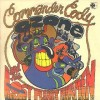 4. Commander Cody and His Lost Planet Airmen Lost in the Ozone (1971) Looking back almost as much as it looked forward, this raucous album introduced elements of rockabilly and boogie-woogie into the country rock mix. Commander Cody would record some more great albums, but this remains his definitive statement.
4. Commander Cody and His Lost Planet Airmen Lost in the Ozone (1971) Looking back almost as much as it looked forward, this raucous album introduced elements of rockabilly and boogie-woogie into the country rock mix. Commander Cody would record some more great albums, but this remains his definitive statement.
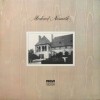 5. Michael Nesmith And the Hits Just Keep on Comin’ (1972) The Monkees’ hippest member recorded some of the best music in the country rock canon. But this minimalist outing, which features a rendition of “Different Drum” that’s superior to Linda Ronstadt’s version, is a true standout.
5. Michael Nesmith And the Hits Just Keep on Comin’ (1972) The Monkees’ hippest member recorded some of the best music in the country rock canon. But this minimalist outing, which features a rendition of “Different Drum” that’s superior to Linda Ronstadt’s version, is a true standout.
Further listening: Across the pond, Americana made its mark in 60′s Britain as well. For an idea of what what Country sounds like when it’s melded with Yardbirdsy blues, check out The Country Sect by The Downliners Sect; its 1965 release date makes it a record that was truly ahead of its time. Ray Davies was also taking notes when it came to Country, and his obsessions with it are most successfully explored on the Kinks’ last great album, 1971′s Muswell Hillbillies. Brinsley Schwarz, a band that counted Nick Lowe as an original member, were major underachievers in their day, but their take on country would come to define another genre, pub rock. Their second LP, Despite it All, is a small masterpiece. – Richard P
Are we forgetting anyone? We’d love to hear your comments:



I always put a plug in for NRPS “Gypsy Cowboy”. The title track always gives me a Flaming Lips vibe.
Just a few more:
– The two LPs by Swampwater (who also worked as Linda Ronstadt’s backup band in the late 60s), which also included some Cajun influences.
– ‘Wheatstraw Suite,’ ‘Copperfields’ and ‘Roots and Branches’ by The Dillards
– ‘Uncle Teddy and His Dog Charlie’ by The Nitty Gritty Dirt Band
– ‘The Fantastic Expedition of Dillard & Clark’ – classic!
Let’s not forget Gram Parsons’ 1967 obscurity, Safe At Home with the International Submarine Band. He was an unmistakable disciple of the Bakersfield Sound before Sweetheart ever happened.
Poco, born out of the ash of the Buffalo Springfield, is a particular favourite of mine. “A Good Feeling to Know” is probably their pinnacle.